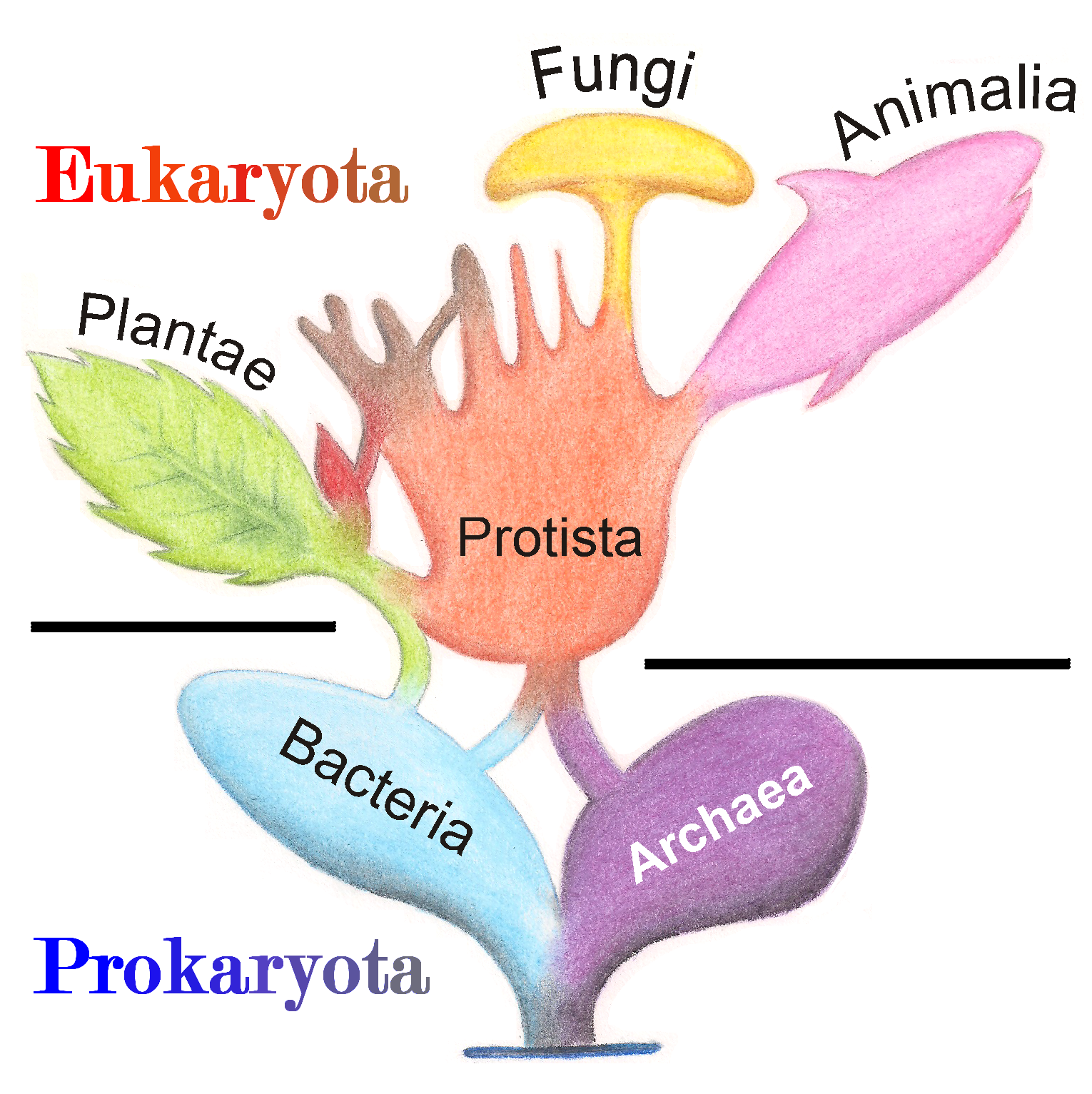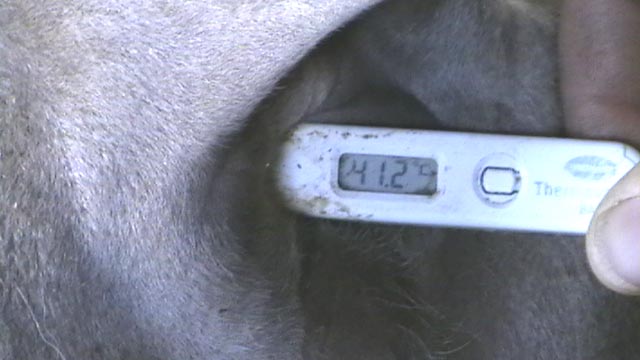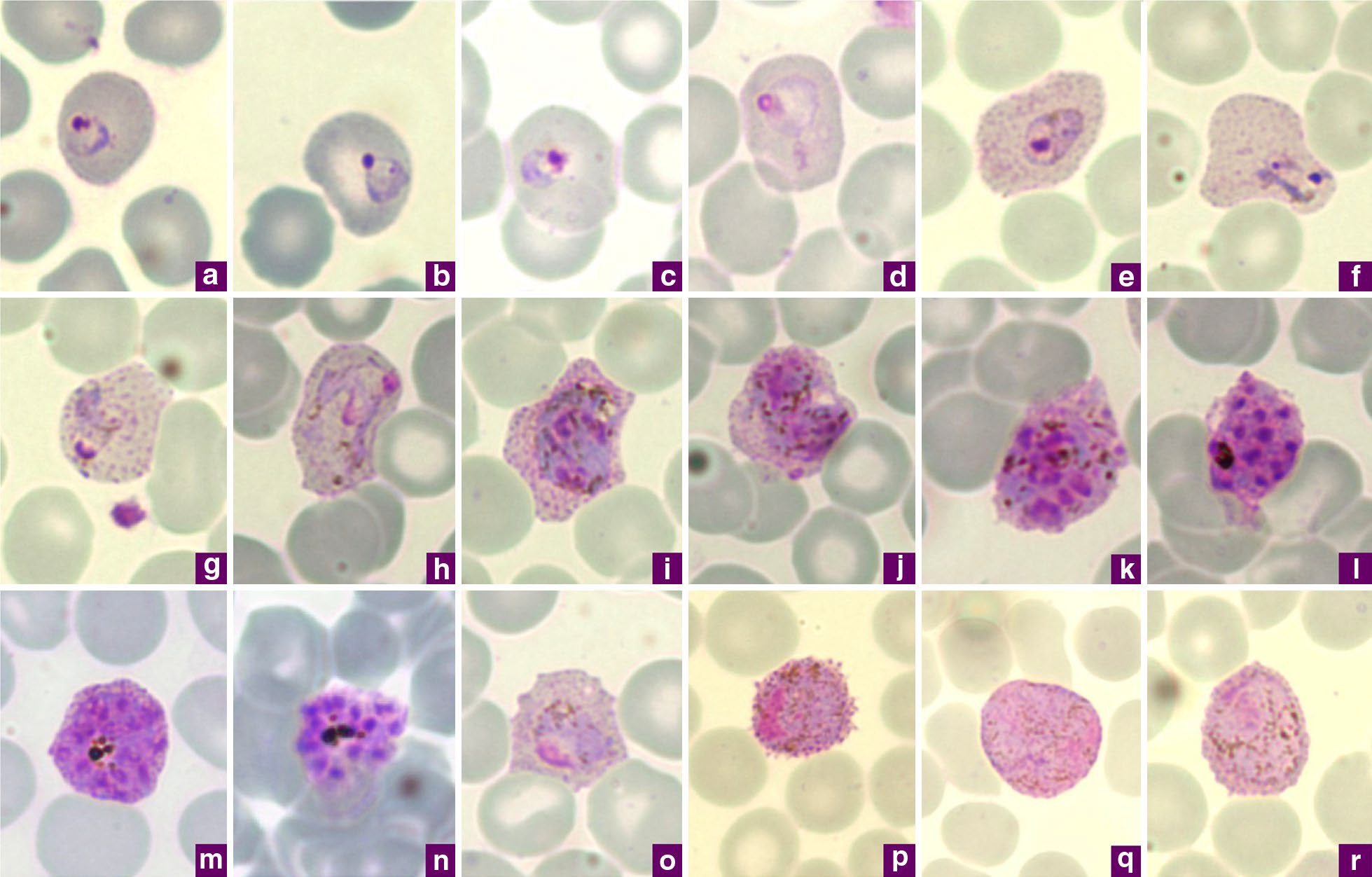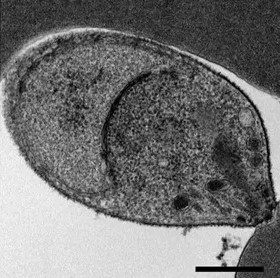|
List Of Sequenced Protist Genomes
This list of sequenced protist genomes contains all the protist species known to have publicly available complete genome sequences that have been assembled, annotated and published; draft genomes are not included, nor are organelle only sequences. Alveolata Alveolata are a group of protists which includes the Ciliophora, Apicomplexa and Dinoflagellata. Members of this group are of particular interest to science as the cause of serious human and livestock diseases. Amoebozoa Amoebozoa are a group of motile amoeboid protists, members of this group move or feed by means of temporary projections, called pseudopods. The best known member of this group is the slime mold, which has been studied for centuries; other members include the Archamoebae, Tubulinea and Flabellinia. Some Amoeboza cause disease. Chromista The Chromista are a group of protists that contains the algal phyla Heterokontophyta ( stramenopiles), Haptophyta and Cryptophyta. Members of this group are most ... [...More Info...] [...Related Items...] OR: [Wikipedia] [Google] [Baidu] |
Protist
A protist () is any eukaryotic organism (that is, an organism whose cells contain a cell nucleus) that is not an animal, plant, or fungus. While it is likely that protists share a common ancestor (the last eukaryotic common ancestor), the exclusion of other eukaryotes means that protists do not form a natural group, or clade. Therefore, some protists may be more closely related to animals, plants, or fungi than they are to other protists. However, like the groups ''algae'', ''invertebrates'', and '' protozoans'', the biological category ''protist'' is used for convenience. Others classify any unicellular eukaryotic microorganism as a protist. The study of protists is termed protistology. History The classification of a third kingdom separate from animals and plants was first proposed by John Hogg in 1860 as the kingdom Protoctista; in 1866 Ernst Haeckel also proposed a third kingdom Protista as "the kingdom of primitive forms". Originally these also included prokaryote ... [...More Info...] [...Related Items...] OR: [Wikipedia] [Google] [Baidu] |
Paramecium Tetraurelia
'' ''Paramecium'' ( , ; also spelled ''Paramoecium'') is a genus of eukaryotic, unicellular ciliates, commonly studied as a representative of the ciliate group. ''Paramecia'' are widespread in freshwater, brackish, and marine environments and are often very abundant in stagnant basins and ponds. Because some species are readily cultivated and easily induced to conjugate and divide, it has been widely used in classrooms and laboratories to study biological processes. Its usefulness as a model organism has caused one ciliate researcher to characterize it as the " white rat" of the phylum Ciliophora. Historical background ''Paramecia'' were among the first ciliates to be seen by microscopists, in the late 17th century. They were probably known to the Dutch pioneer of protozoology, Antonie van Leeuwenhoek, and were clearly described by his contemporary Christiaan Huygens in a letter of 1678. The earliest known illustration of a Paramecium was published anonymously in Philosoph ... [...More Info...] [...Related Items...] OR: [Wikipedia] [Google] [Baidu] |
Theileria Annulata
Tropical theileriosis or Mediterranean theileriosis is a theileriosis of cattle from the Mediterranean and Middle East area, from Morocco to Western parts of India and China. It is a tick-borne disease, caused by ''Theileria annulata''. The vectors are ticks of the genera '' Hyalomma'' and '' Rhipicephalus''. The most prominent symptoms are fever and lymph node enlargement. But there is a wide range of clinical manifestations, especially in enzootic areas. Among them, the Doukkala area of Morocco, where the epidemiology and symptomatology of the disease were minutely studied. AGRIS iFR2002001447 The disease was once considered as "benign" in the literature, in comparison to East Coast fever. With the introduction of European breeds into the region, however, it could become of major economic incidence.With mortalities up to 50 to 80 percent in the 1980sL. Mahin. An efficient treatment with parvaquone, then buparvaquone became available in many countries from the mid-199 ... [...More Info...] [...Related Items...] OR: [Wikipedia] [Google] [Baidu] |
Tetrahymena Thermophila
''Tetrahymena thermophila'' is a species of Ciliophora in the family Tetrahymenidae. It is a free living protozoa and occurs in fresh water. There is little information on the ecology and natural history of this species, but it is the most widely known and widely studied species in the genus ''Tetrahymena''. The species has been used as a model organism for molecular and cellular biology. It has also helped in the discovery of new genes as well as help to understand the mechanisms of certain genes functions. Studies on this species have contributed to major discoveries in biology. For example, the MAT locus found in this species has provided a foundation for the evolution of mating systems. The species was first considered to be ''Tetrahymena pyriformis''. '' T. malaccensis'' is the closest relative to''T. thermophila''. Characteristics It is about 50 μm long. One famous trait this species is known for is that has 7 different mating types, unlike most eukaryotic organisms, ... [...More Info...] [...Related Items...] OR: [Wikipedia] [Google] [Baidu] |
King Abdullah University Of Science And Technology
King Abdullah University of Science and Technology (KAUST; ar, جامعة الملك عبد الله للعلوم و التقنية ') is a private research university located in Thuwal, Saudi Arabia. Founded in 2009, the university provides research and graduate training programs in English as the official language of instruction. KAUST is the first mixed-gender university campus in Saudi Arabia. In 2013, the university was among the 500 fastest growing research and citation records in the world. In the 2016 Nature Index Rising Stars, the university ranked 19th in the world of the fastest rising universities for high quality research output. In 2019 KAUST is ranked 8th fastest rising young universities (aged 50 and under) for their research output since 2015, as measured by fractional count (FC). History In 2006, Ali Al-Naimi chaired a Saudi Aramco team to undertake the building and planning of the academics. Nadhmi Al-Nasr was chosen to lead the project. They emp ... [...More Info...] [...Related Items...] OR: [Wikipedia] [Google] [Baidu] |
Plasmodium Yoelii Yoelii
''Plasmodium yoelii'' is a parasite of the genus ''Plasmodium'' subgenus ''Vinckeia''. As in all ''Plasmodium'' species, ''P. yoelii'' has both vertebrate and insect hosts. The vertebrate hosts for this parasite are mammals. Taxonomy This species was described in 1968 by Landau, Michel and Adam. Three subspecies are recognised: ''P. y. killicki'', ''P. y. nigeriensis'' and ''P. y. yoelli''. Strains *''P. yoelii'' Distribution This species occurs in Africa. Vectors The natural vectors of this species are not currently known. One possible is the female ''Anopheles'' mosquito which serves as a vector for ''Plasmodium vivax''. Hosts This species infects ''Thamnomys rutilans.'' Pathogenesis ''P. yoelii'' impairs immune responses including impairing responses to other pathogens. Fewer granulocytes move out from the bone marrow and in a separate action induces the rodent's own heme oxygenase 1 (HO-1). Although HO-1 induction is a tolerance response by the host to mala ... [...More Info...] [...Related Items...] OR: [Wikipedia] [Google] [Baidu] |
Plasmodium Vivax
''Plasmodium vivax'' is a protozoal parasite and a human pathogen. This parasite is the most frequent and widely distributed cause of recurring malaria. Although it is less virulent than '' Plasmodium falciparum'', the deadliest of the five human malaria parasites, ''P. vivax'' malaria infections can lead to severe disease and death, often due to splenomegaly (a pathologically enlarged spleen). ''P. vivax'' is carried by the female '' Anopheles'' mosquito; the males do not bite. Health Epidemiology ''Plasmodium vivax'' is found mainly in Asia, Latin America, and in some parts of Africa. ''P. vivax'' is believed to have originated in Asia, but recent studies have shown that wild chimpanzees and gorillas throughout central Africa are endemically infected with parasites that are closely related to human ''P. vivax.'' These findings indicate that human P. vivax is of African origin. ''Plasmodium vivax'' accounts for 65% of malaria cases in Asia and South America. Unlike ''Pl ... [...More Info...] [...Related Items...] OR: [Wikipedia] [Google] [Baidu] |
Plasmodium Knowlesi
''Plasmodium knowlesi'' is a parasite that causes malaria in humans and other primates. It is found throughout Southeast Asia, and is the most common cause of human malaria in Malaysia. Like other ''Plasmodium'' species, ''P. knowlesi'' has a life cycle that requires infection of both a mosquito and a warm-blooded host. While the natural warm-blooded hosts of ''P. knowlesi'' are likely various Old World monkeys, humans can be infected by ''P. knowlesi'' if they are fed upon by infected mosquitoes. ''P. knowlesi'' is a eukaryote in the phylum Apicomplexa, genus ''Plasmodium'', and subgenus ''Plasmodium''. It is most closely related to the human parasite ''Plasmodium vivax'' as well as other ''Plasmodium'' species that infect non-human primates. Humans infected with ''P. knowlesi'' can develop uncomplicated or severe malaria similar to that caused by ''Plasmodium falciparum''. Diagnosis of ''P. knowlesi'' infection is challenging as ''P. knowlesi'' very closely resembles other spe ... [...More Info...] [...Related Items...] OR: [Wikipedia] [Google] [Baidu] |
Malaria
Malaria is a mosquito-borne infectious disease that affects humans and other animals. Malaria causes symptoms that typically include fever, tiredness, vomiting, and headaches. In severe cases, it can cause jaundice, seizures, coma, or death. Symptoms usually begin ten to fifteen days after being bitten by an infected mosquito. If not properly treated, people may have recurrences of the disease months later. In those who have recently survived an infection, reinfection usually causes milder symptoms. This partial resistance disappears over months to years if the person has no continuing exposure to malaria. Malaria is caused by single-celled microorganisms of the '' Plasmodium'' group. It is spread exclusively through bites of infected '' Anopheles'' mosquitoes. The mosquito bite introduces the parasites from the mosquito's saliva into a person's blood. The parasites travel to the liver where they mature and reproduce. Five species of ''Plasmodium'' can infect and be spr ... [...More Info...] [...Related Items...] OR: [Wikipedia] [Google] [Baidu] |
Plasmodium Falciparum
''Plasmodium falciparum'' is a unicellular protozoan parasite of humans, and the deadliest species of ''Plasmodium'' that causes malaria in humans. The parasite is transmitted through the bite of a female '' Anopheles'' mosquito and causes the disease's most dangerous form, falciparum malaria. It is responsible for around 50% of all malaria cases. ''P. falciparum'' is therefore regarded as the deadliest parasite in humans. It is also associated with the development of blood cancer (Burkitt's lymphoma) and is classified as a Group 2A (probable) carcinogen. The species originated from the malarial parasite '' Laverania'' found in gorillas, around 10,000 years ago. Alphonse Laveran was the first to identify the parasite in 1880, and named it ''Oscillaria malariae''. Ronald Ross discovered its transmission by mosquito in 1897. Giovanni Battista Grassi elucidated the complete transmission from a female anopheline mosquito to humans in 1898. In 1897, William H. Welch created the n ... [...More Info...] [...Related Items...] OR: [Wikipedia] [Google] [Baidu] |
Plasmodium Chabaudi
''Plasmodium chabaudi'' is a parasite of the genus ''Plasmodium'' subgenus ''Vinckeia''. As in all ''Plasmodium'' species, ''P. chabaudi'' has both vertebrate and insect hosts. The vertebrate hosts for this parasite are rodents. Taxonomy This species was described in 1965 by Irène Landau. It is named after the French parasitologist Alain Chabaud. Subspecies Two subspecies have been defined: ''P. chabaudi chabaudi'' and ''P. chabaudi adami''. Genome The nuclear genome is 18.8 megabases in size with a karyotype of 14 chromosomes. The G+C content is ~23%. A genome sequencing project is underway. Distribution ''P. chabaudi'' is found in Africa. It was first isolated from the blood of a shining thicket rat ('' Thamnomys rutilans'') in the Central African Republic. Hosts While it is difficult to study ''P. chabaudi'' in its natural host given the difficulty of taming the thicket rat, it has been studied extensively in laboratory mice, largely using the clone ''P. chabau ... [...More Info...] [...Related Items...] OR: [Wikipedia] [Google] [Baidu] |
Plasmodium Berghei ANKA
''Plasmodium berghei'' is a species in the genus ''Plasmodium'' subgenus ''Vinckeia''. It is a protozoan parasite that causes malaria in certain rodents. Originally, isolated from thicket rats in Central Africa, ''P. berghei'' is one of four ''Plasmodium'' species that have been described in African murine rodents, the others being ''P. chabaudi'', '' P. vinckei'', and '' P. yoelii''. Due to its ability to infect rodents and relative ease of genetic engineering, ''P. berghei'' is a popular model organism for the study of human malaria. Biology Like all malaria parasites of mammals, including the four human malaria parasites, ''P. berghei'' is transmitted by ''Anopheles'' mosquitoes and it infects the liver after being injected into the bloodstream by a bite of an infected female mosquito. After a short period (a few days) of development and multiplication, these parasites leave the liver and invade erythrocytes (red blood cells). The multiplication of the parasite in the bloo ... [...More Info...] [...Related Items...] OR: [Wikipedia] [Google] [Baidu] |








